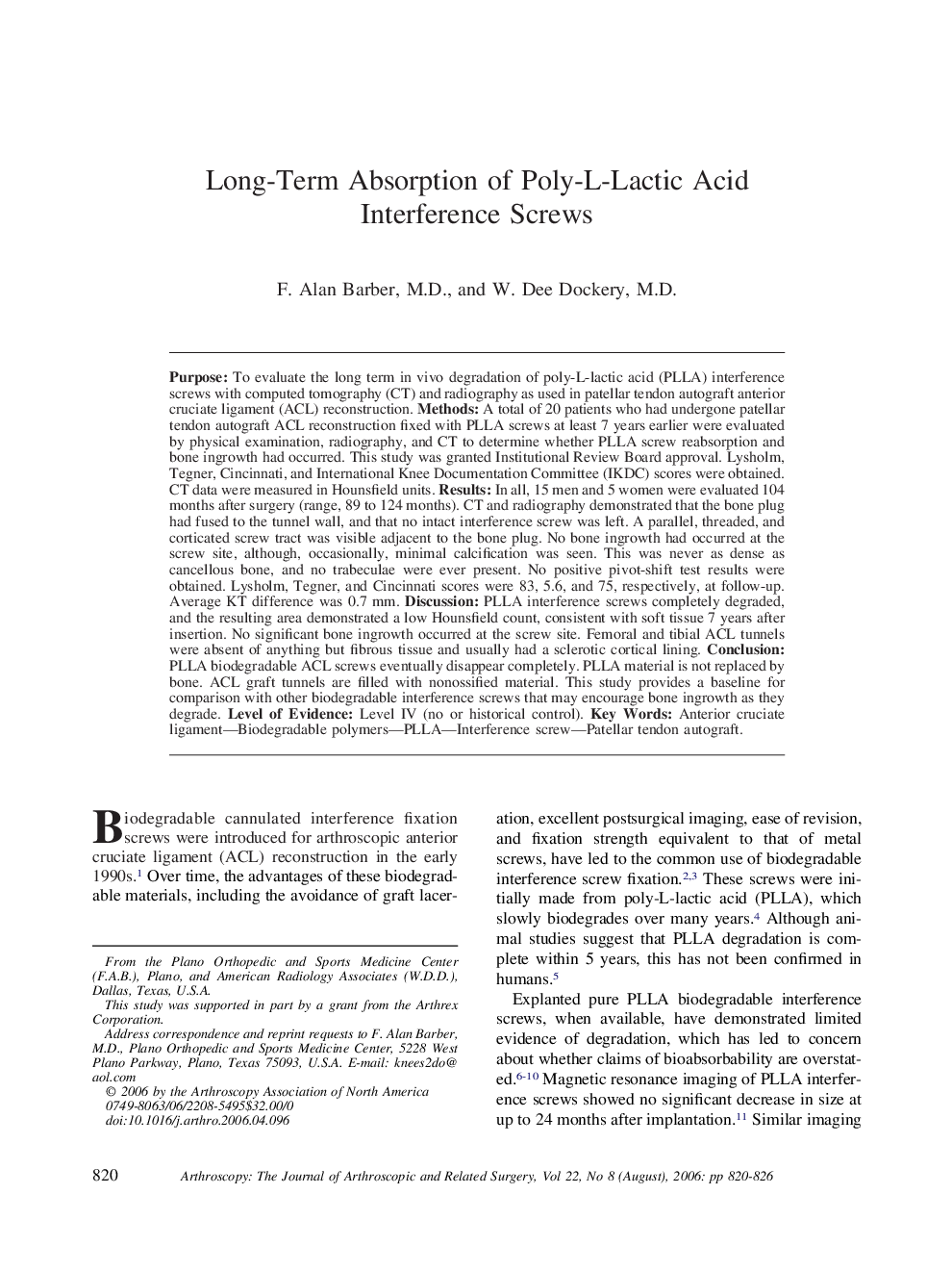| Article ID | Journal | Published Year | Pages | File Type |
|---|---|---|---|---|
| 4047167 | Arthroscopy: The Journal of Arthroscopic & Related Surgery | 2006 | 7 Pages |
Purpose: To evaluate the long term in vivo degradation of poly-L-lactic acid (PLLA) interference screws with computed tomography (CT) and radiography as used in patellar tendon autograft anterior cruciate ligament (ACL) reconstruction. Methods: A total of 20 patients who had undergone patellar tendon autograft ACL reconstruction fixed with PLLA screws at least 7 years earlier were evaluated by physical examination, radiography, and CT to determine whether PLLA screw reabsorption and bone ingrowth had occurred. This study was granted Institutional Review Board approval. Lysholm, Tegner, Cincinnati, and International Knee Documentation Committee (IKDC) scores were obtained. CT data were measured in Hounsfield units. Results: In all, 15 men and 5 women were evaluated 104 months after surgery (range, 89 to 124 months). CT and radiography demonstrated that the bone plug had fused to the tunnel wall, and that no intact interference screw was left. A parallel, threaded, and corticated screw tract was visible adjacent to the bone plug. No bone ingrowth had occurred at the screw site, although, occasionally, minimal calcification was seen. This was never as dense as cancellous bone, and no trabeculae were ever present. No positive pivot-shift test results were obtained. Lysholm, Tegner, and Cincinnati scores were 83, 5.6, and 75, respectively, at follow-up. Average KT difference was 0.7 mm. Discussion: PLLA interference screws completely degraded, and the resulting area demonstrated a low Hounsfield count, consistent with soft tissue 7 years after insertion. No significant bone ingrowth occurred at the screw site. Femoral and tibial ACL tunnels were absent of anything but fibrous tissue and usually had a sclerotic cortical lining. Conclusion: PLLA biodegradable ACL screws eventually disappear completely. PLLA material is not replaced by bone. ACL graft tunnels are filled with nonossified material. This study provides a baseline for comparison with other biodegradable interference screws that may encourage bone ingrowth as they degrade. Level of Evidence: Level IV (no or historical control).
